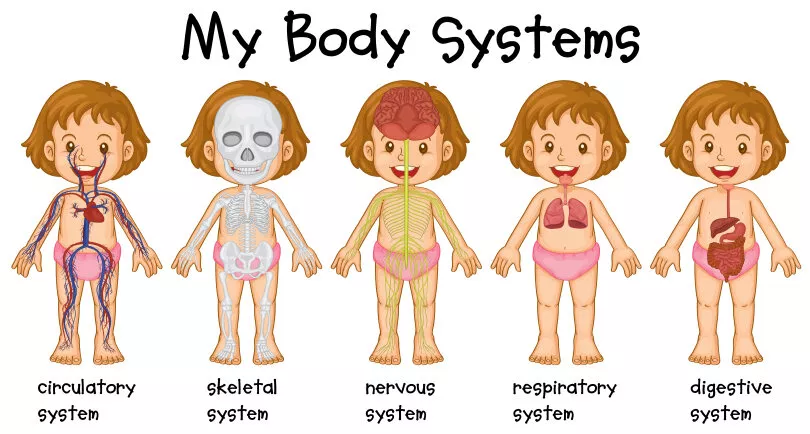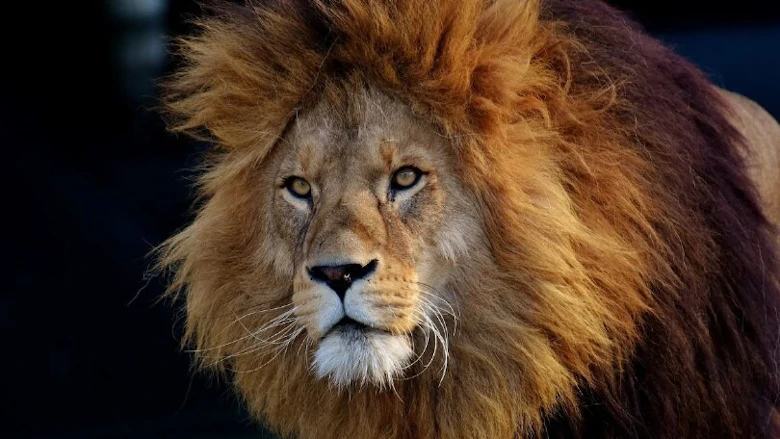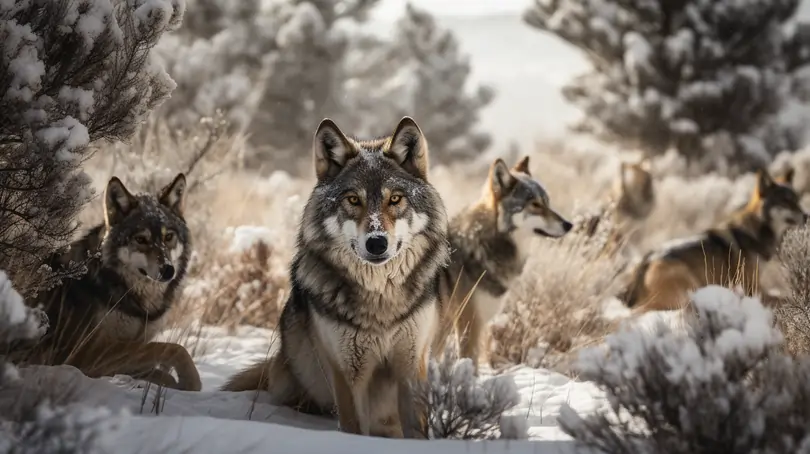The Environment And Relationships
In this article, you will be introduced to various relationships in the environment according to the Singapore Primary 6 Science Syllabus. We will focus on the following two main aspects in the environment:
- Relationship within the population
- Relationship with other populations
Relationship within the population
A population is defined as a group of organisms of the same kind living together and reproducing in a particular place. It includes all the adults and young of that particular organism at any stage of its life cycle. The place where the organisms of the same kind live together and reproduce is known as a habitat.
What happens when the population size of an organism increases?
The main problem that populations face when the size of the population gradually increases over time is overcrowding, which will lead to competition for resources.
- Overcrowding
As the size of the population increases, the number of organisms competing for the same limited space increases. This leads to overcrowding.
Overcrowding occurs when the environment no longer has enough resources, such as food, water and space, to support the large population size. Thus, individual organisms will have to compete with each other for the limited resources in order to survive.
Some animals of a particular population facing competition from other members of its population may migrate to other places. Some organisms might get outcompeted by other members of its population and this leads to their deaths. The eventual outcome of overcrowding is a decrease in the population size of that organism until the environment is able to provide sufficient resources for all the individuals within that population.
Benefits of living together
However, organisms of the same species tend to live together in order to benefit from the presence of each other. Such benefits include protection and cooperation among themselves.
-
Protection
When organisms live in a group, they are protected as a group. Living in a group ensures that the individuals within the group receive more protection than they would when compared to those that live alone. The vulnerable members of the population, such as the young, the old, and the injured, will be well-protected within the group.
-
Cooperation
Organisms living together may work together to take care of each other, look for food, warn each other of danger and/or to achieve certain objectives that cannot be achieved alone. An example would be ants working together to move large objects.
An example of a population with members working cooperatively will be the meerkats. They live in burrows in a cohesive family group of up to 40 animals. They groom each other, babysit the dominant female’s pups, forage together and fight other groups to defend their population.
The picture below shows some meerkats standing and observing their surroundings vigilantly, keeping an eye on any possible predators while the others in the group forage for food.
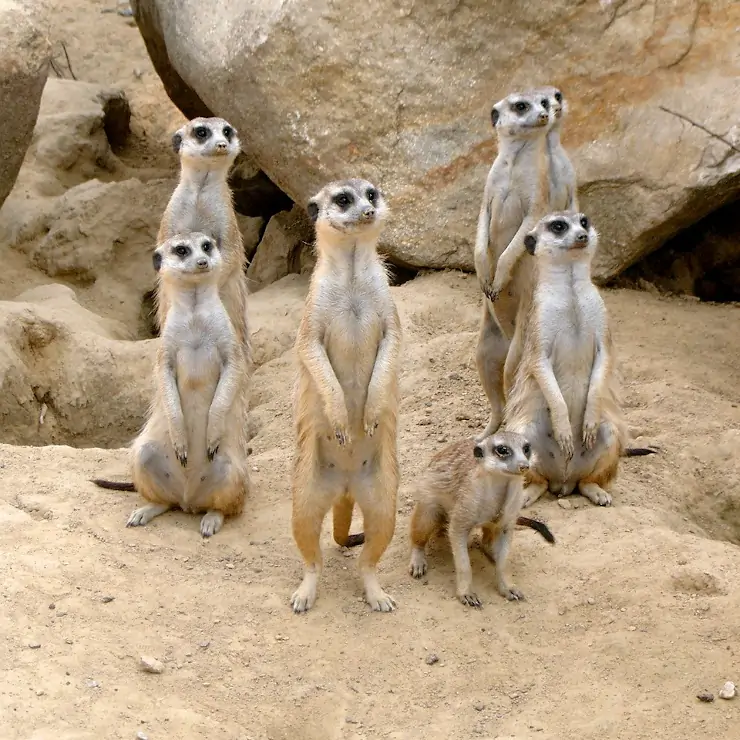
Image Credit: pixabay - Didgeman
Relationship With Other Populations
Let’s dive into the different types of relationships that exist with other organisms.
When different populations interact with one another in the same habitat, it is known as a community. There are many different types of relationships that exist within a community.
Symbiotic relationship involves the interaction between two different organisms which live in close physical association with each other. They have an interdependent relationship with each other.
Here are some examples of symbiotic relationships:
- Predator-Prey Relationship
- Mutualism
-
Predator-Prey Relationship
A predator-prey relationship is where an animal is being hunted as food by another animal. A predator is an animal that hunts other animals for food. A prey is an animal that is being hunted by other animals.
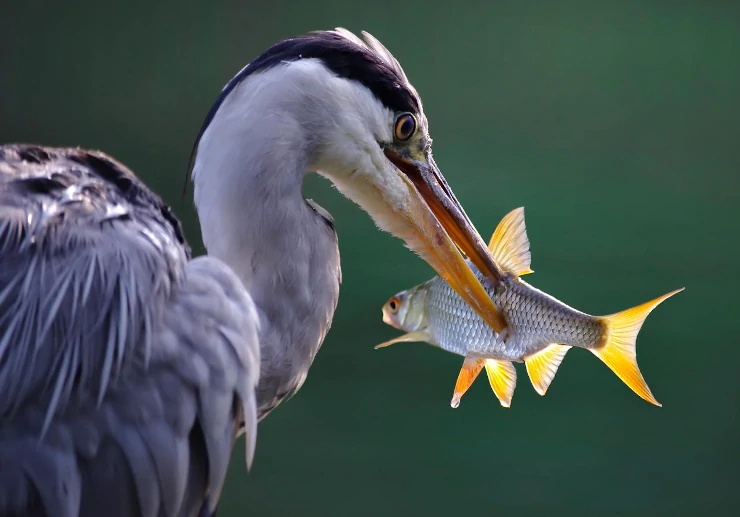
Image Credit: pixabay - wal_172619

Image Credit: pixabay - baluda
Based on the pictures above, the grey heron and the lion are the predators while the fish and the antelope are preys. The term ‘predator’ and ‘prey’ only refers to animals.
Carnivorous plants are not considered as a predator even though they feed on small animals to obtain nutrients. Such plants do not go around looking for food. Examples of such plants are pitcher plants and Venus Flytrap plants.
-
Mutualism
Mutualism is where both organisms benefit from each other and it is a win-win relationship.
The pictures below are examples of how mutualism exists among the organisms.
A bee obtains nectar (food) from the flower while the flower gets pollinated for reproduction.
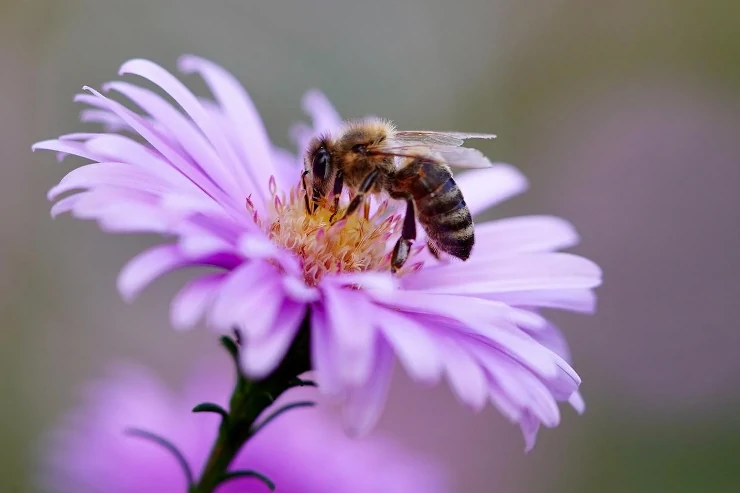
Image Credit: pixabay - Mammiya
The clownfish helps to keep the sea anemones free of parasites and provide them with nutrients from their faeces. The stinging tentacles of the sea anemone help to protect the clownfish from their predators.
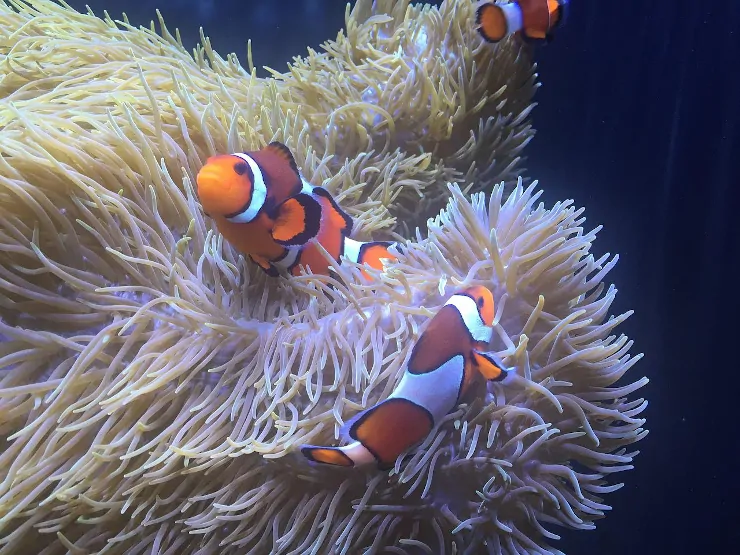
Image Credit: pixabay - JulioCamelo
Conclusion
In this article, we learnt about the types of relationships that exist in the environment. We also learnt about the problems and benefits of living together within the population. We also explored the relationships with other populations such as the predator-prey relationship and mutualism.
Test Your Concepts
Answer the following questions based on the concepts we’ve covered in this article. If you are unclear, you may want to revisit the relevant section to revise the concepts.
Question 1:
The picture below shows a caterpillar feeding on a piece of leaf.
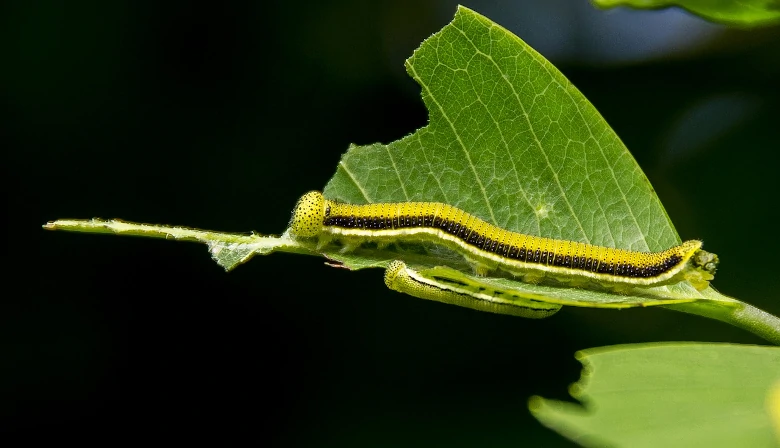
Image Credit: pixabay - Sandid
Do the caterpillar and the leaf have a predator-prey relationship?
Solution:
No
Explanation:
The caterpillar is not a predator of the plant. Since the leaf is a part of the plant, it is not prey.
Question 2:
Buffaloes usually have numerous blood-sucking ticks attached to their bodies. The Oxpecker bird feeds on the ticks and also hitches a ride on the buffaloes. How does the buffalo benefit in this relationship?
Solution:
The Oxpecker bird helps to remove the ticks that are on the buffaloes’ bodies by feeding on the ticks.
Explanation:
The Oxpecker bird and the buffaloes have a mutual relationship (mutualism). As the Oxpecker bird feeds on the ticks from the bodies of the buffaloes, the bird obtains food while the buffaloes get themselves free from ticks.
Question 3:
The diagram below shows a type of relationship between two organisms.

Which of the following relationships is most similar to the relationship between the two organisms above?
- A crow feeds on a grasshopper.
- Weed growing among watermelon plants.
- Love grass being dispersed by a wild hare running past.
- A butterfly obtaining nectar from the flowers of a papaya tree.
Solution:
(4) A butterfly obtaining nectar from the flowers of a papaya tree.
Explanation:
The clownfish and the sea anemone have a mutual relationship (mutualism). The crow and the grasshopper have a food producer and consumer relationship. The love grass benefits from the wild hare as it gets dispersed but the wild hare does not benefit from the love grass. The butterfly obtains nectar (food) from the flowers of the papaya tree while the papaya tree gets pollinated.
| Continue Learning | |
|---|---|
| Interaction: Introduction to Force | Living Together |
| The Environment And Relationships | Food Chains: Roles And Relationships |
| Interaction Of Forces: Friction | Food Webs: Roles And Relationships |
| Energy In Food | |
Test Yourself
During a period of drought, the water in a pond dries up. What would happen to the population of dragonflies near the pond?
1: There will be an increase in the population size.
2: There will be a decrease in the population size.
3: The population may move out of the pond area.
Select the correct option
The habitat that dragonflies are adapted to live in is the pond. Hence if the water dries up, the population of the dragonflies will be affected adversely. Alternatively, they may also migrate to another area that is suitable.
An experiment was carried out to find out which species of ladybug, R or S, can better control the population of aphids in the plantation. Two ladybugs R were placed in Set-up A and two ladybugs S were placed in Set-up B as shown in the diagram below. Five aphids were also placed in each set-up and left undisturbed for two hours.
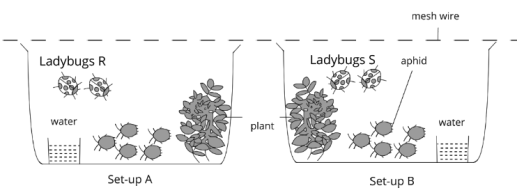
Which set-up can be used to determine which species of ladybird should be used to control the aphids after the experiment?
1: The set-up that has the most amount of water left.
2: The set-up that has the least amount of leaves left.
3: The set-up that has the least number of aphids left.
4: The set-up that has the most number of ladybugs left.
Since only two ladybugs were used in the set-up, the least number of aphids left will tell us which species controlled the aphid population better.
The line graph below shows the effect of temperature on the size of population of three different organisms, P, Q and R.

The population size of which organism(s) is not negatively affected by a temperature of above 45°C?
The population size of P remained constant when temperature rises above 45°C. While the population size of Q continues to increase when temperature rises above 45°C. These two organisms are not affected by the increase in temperature. However, it can be observed that the population size of R decreases when the temperature rises above 45°C. Organism R is affected by the increase in temperature.




 SG
SG  VN
VN 

